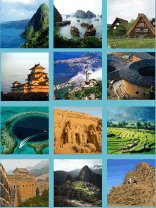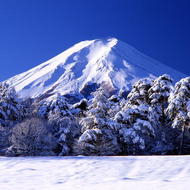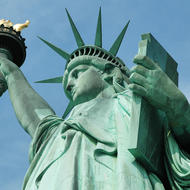Guide 7: Adding value through products, experiences, and services
What this guide will tell you:
This guide will tell you how to think about developing products, services, and experiences as a key way to sustain the OUV of the site, enthuse tourists, and benefit local communities.
Steps to success:
- Why this matters
-
Making tourism more sustainable often means changing the products, experiences, and services the destination offers visitors. We believe that it is essential to offer the visitor a 'progressive alternative' to the less sustainable options offered previously.
It is also important to offer the host community and local businesses an enterprising and sustainable commercial vision of the future, possibly replacing a current downward spiral towards bad choices and negative impacts.
-
 The four reasons why you should seek to add value to sustainable and authentic products, services, and experiences at your destination
The four reasons why you should seek to add value to sustainable and authentic products, services, and experiences at your destination -
1) Some products, services, and experiences are OUV critical.
Many World Heritage sites are 'cultural landscapes' that were created by and still sustained by traditional socio-economic systems (e.g. the Banaue Rice Terraces in Ifuago Mountains, Philippines). In these situations, it is imperative that value is added to the products of such landscapes so the system can be sustained and the OUV attributes preserved through its survival.
2) Some products, services, and experiences are community welfare critical.
Many communities living in or around World Heritage sites will depend on a relatively small number of products, services, and experiences to survive and feed their families. Even if their basic economic activities are not the OUV, it is often critical for good heritage management that they are able to survive and have a reasonable standard of living. People who are experiencing economic decline are more likely to make choices that can damage the natural or cultural heritage.
3) Keep in mind that ‘distinctive’, ‘authentic', and or ‘unique’ sells.
People visiting some of the world's most special cultural and natural sites have a reasonable desire for products, services, and experiences they cannot get anywhere else. The perception of the quality of a destination is a serious matter, and one that can be helped in part by the products, services, or experiences it offers. Regardless of whether what is offered at the destination is important for the host community's livelihood or the OUV of the site, it is often just good sense and good economics that the opportunities provide good things to buy and do.
4) Diversifying the products, services, and experiences is inherently more robust and sustainable.
Many destinations have quite a narrow product range, which increases their fragility to risk. By widening the product portfolio, you spread the risk for the host community and businesses.
-
 Identify the products, services, and experiences that can be or must be developed
Identify the products, services, and experiences that can be or must be developed -
Guide 1 (Understanding tourism) and Guide 2 (Developing your strategy) should have helped you to identify ways that the visitor experience and the tourism economy can be better exploited and enhanced for the good of the site, destination, and host community. If those guides did not, go back and look over them again, perhaps giving some additional attention to the case studies and resources supplied.
From this, you can ask: What products, services and experiences are needed and appropriate to your destination? Different destinations will have radically different answers to this question. For example, some may recognize that rice or lemons might be crucial to sustaining OUV, and therefore, find ways to add value to them (see the Cinque Terre in Italy or Ifugao Rice Terraces in the Philippines for example). Other sites, instead, might want to focus on the quality of the guides they employ, the quality of the existing accommodation, or forms of interpretation. Many sites have relatively inaccessible OUV narratives, so a combination of good guiding, good interpretation, and new forms of access can increase the value of this experience a great deal.
You also need to control or prevent the development of inappropriate or destructive products, services, and experiences. Some activities some tourists may wish to engage in – or which businesses may wish to offer – may simply be inappropriate or threaten the OUV of the site. Create policy or negative publicity to prevent them from happening.
-
 Add value to products, help them to secure market demand, and ideally create a premium over less sustainable products, services, and experiences
Add value to products, help them to secure market demand, and ideally create a premium over less sustainable products, services, and experiences -
Use the existing retail outlets for selling things. Often opportunities for adding value are lost because people do not put together simple things, such as including the OUV critical product into the tourist information, the visitor centres, and museums. Look for linkages and places where this can happen and create marketplace opportunities for key products.
Look to add new infrastructure if it helps to add value to key products. Sometimes the future viability of production processes will require some degree of commercial modernizations. For example, wine production businesses will periodically need to invest in bottling machinery or new hygiene processes, but such infrastructure will also be of great importance to the future character of a community or potentially add to a site's OUV (See Guide 6 on Developing Tourism Infrastructure).
Look for sensitive ways to lower the manufacturing costs of key products. Some of the most effective World Heritage sites have invested in new technologies or mechanisation of certain processes to lower the costs of agricultural production. This can create issues around the appropriateness of interventions and whether they affect the authenticity of the site, but often there are ways to help producers that do not undermine the site's OUV.
Invest in branding, marketing, and adding a provenance premium to key products. Affluent consumers across the world are increasingly willing to spend more on products that have a unique provenance, or story of origin. Important products produced in a World Heritage site should be marketed and sold in such a way that consumers realise the importance of what they are buying (see the case study of Vega, Norway for a great example of value-added products). However, do not expect the value of your products will be immediately obvious to consumers, or that they will automatically be willing to spend vast amounts of money on certain items.
Price products to reflect their importance in the site. Many consumers are willing to pay a premium for certain products if they understand it is a way in which they can support the future of a globally significant heritage site. The presentation of these products should help the consumer to make this mental connection and an informed choice.
Work with the tourism sector to make consuming key products, services, or experiences an essential and not-to-be-missed part of the visitor experience. Visitors often have a strong desire to do unique, authentic, or unusual things when visiting a special place. They want to taste, smell, touch, feel, and hear things they do not at home. At its worst this can, of course, result in intangible cultural heritage and cultural artefacts becoming a rather false, plastic experience, clearly put on for, or taken over by, the visitor. However, there are a great deal of places where buying, consuming, or experiencing products is done in ways that respect a site and add value to the visitor experience.
Site managers need to work with entrepreneurs and the community to develop and offer products. As we set out in Guide 2, it is essential that local people are part of identifying and realizing these opportunities. For experiences to be authentic they need to be brought forth by the host community in a way they feel is respectful, authentic, and beneficial to them, as well as to the visitor.
-
 Support entrepreneurs and the community to develop sustainable products, services, and/or experiences
Support entrepreneurs and the community to develop sustainable products, services, and/or experiences -
Hotels, restaurants, and shops can play a vital role in encouraging visitors to buy key products, so enlist their support. This works in one of two ways:
- By explaining why consumers might want to make purchases of these products, services, and experiences.
- By embedding those products in what they offer guests.
In this way, consuming local food or experiencing the local culture becomes something that everyone is encouraged to do, and most visitors understand they will have a better visitor experience if they do have the opportunity to experience a destination in this way.
-
 Be creative about the products, services, and experiences you can sell to raise revenue
Be creative about the products, services, and experiences you can sell to raise revenue -
We live in an increasingly global marketplace, so take advantage of this global reach. There are a growing number of affluent consumers who want to buy distinctive products with a unique provenance. These consumers are less concerned about price and more concerned about the story behind the product. They look for products, services, or experiences that are unique to a World Heritage site, so in order to secure a premium for products of this kind, you may need to make the world your shop. Use the Internet to reach out to prospective consumers and sell them not only the product, but also its story and ability to sustain a unique place and host community.
-
 Your 'intellectual property' (IP) may be your greatest asset; utilise it to generate revenue
Your 'intellectual property' (IP) may be your greatest asset; utilise it to generate revenue -
Look for opportunities to generate revenue from IP (intellectual property). Many World Heritage sites will be globally iconic places, representing the most bio-diverse or beautiful natural sites and important examples of human genius and creativity. There is often great commercial value for companies who associate with heritage sites, and often sites will have intellectual property that can be commercialized to generate revenue. Museums around the world have already done amazing things in this arena. For example, replicating their collections into a range of marketable goods that generate funds be used to protect their collections in the future. Many World Heritage sites could do similar things and create souvenirs that people both want to buy, as well as supply funds towards their future management and protection.
Protect the intellectual property rights of the site, destination, and host community. Ensuring that the IP is protected is critically important. If it is not properly protected, other people will use your ideas with no return benefit to the local community – or worse, may seek to enforce control over it themselves through claims of usage.



